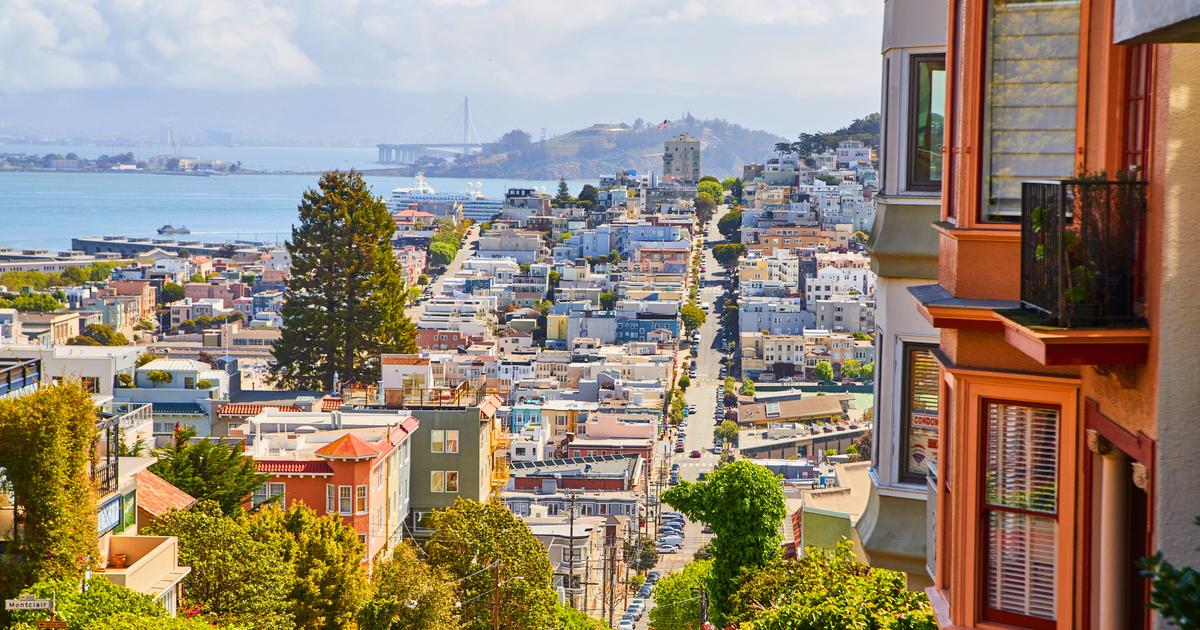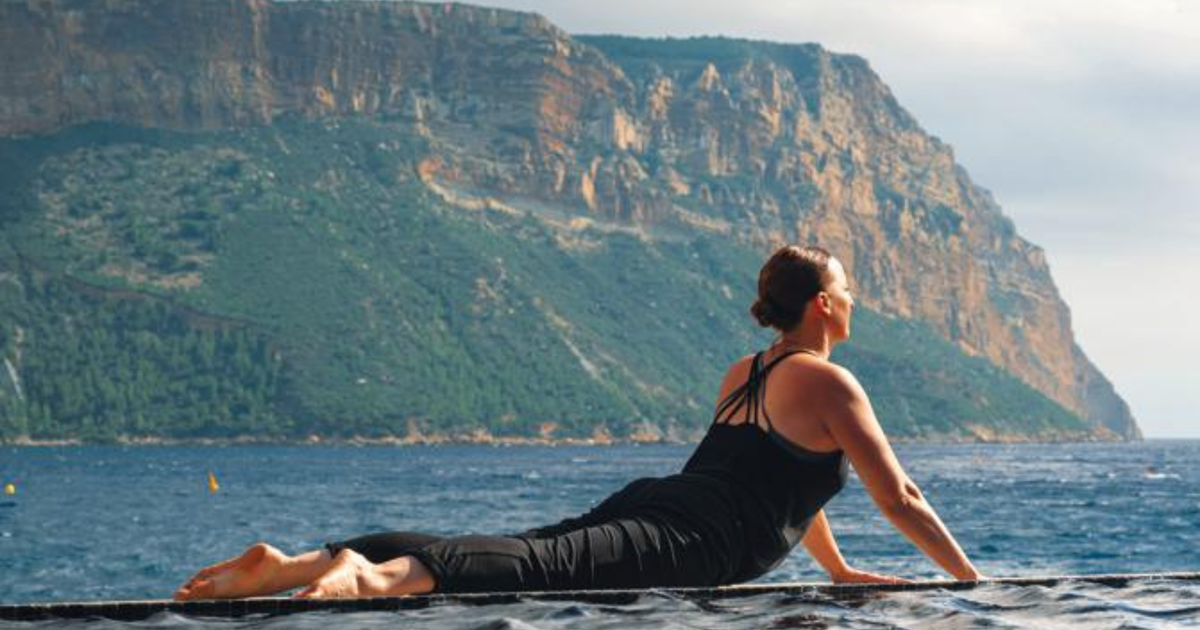The world is full of extraordinary places.
Some are mysterious and chilling;
others go unnoticed, overshadowed by better-known tourist destinations.
There are also decidedly crazy and difficult or impossible to visit.
If these 11 corners of the planet have something in common, it is that they all arouse curiosity and amazement.
Aniakchak Crater (Alaska, USA)
Aerial view of the Aniakchak crater, a volcanic caldera almost 10 kilometers in diameter and 762 meters deep in Alaska, USA).
Alamy Stock Photos
There are few places as inhospitable as Aniakchak National Monument, a volcanic caldera nearly 10 kilometers in diameter and 762 meters deep, formed by a massive eruption 3,500 years ago.
Located in Alaska's Aleutian Range, Aniakchak is a wild and unpredictable place, and its remoteness and extreme weather make it one of the least visited wildernesses in the US national park network.
Hikers will need collapsible kayaks, light camping gear, and a lot of courage.
For more information in the book Secret Wonders of the Lonely Planet World and lonelyplanet.es
Naica Crystal Cave (Chihuahua, Mexico)
The setting that is visually most similar to Superman's lair at the North Pole is the Naica crystal cave, located 300 meters deep under the desert in the Mexican state of Chihuahua.
The gigantic selenite prisms —hydrated calcium sulfate, a variety of crystalline and translucent gypsum— that occupy the interior of the cavity are among the largest known natural crystals: up to 12 meters long, weighing 55 tons and up to four meters thick. .
Giant selenite prisms in the Crystals cave of Naica (Mexico). Alexander Van Driessche / Wikimedia Commons
An undoubtedly fascinating place, although the environment inside is so extreme —temperatures reach 58°C and there is a relative humidity of 96%— that only scientists can access, equipped with special equipment (helmet, gas mask , oxygen cylinder and a suit equipped with ice packs).
Even so, you cannot stay in it for more than 20 minutes.
In addition to Naica, only four places with pure gypsum crystals greater than one meter in length are known worldwide: the El Teniente copper mine (Chile), the Pulpí geode, in Almería, and the ancient Roman mines of Plinio, located in Segóbriga (Cuenca), from where the plaster that served as glass for windows was extracted until flat glass was invented.
Tungurahua swing (Ecuador)
A tourist swinging on the swing in Tungurahua, near Baños (Ecuador).Alamy Stock Photo
High in the Ecuadorian jungle is a wooden cabin perched precariously on the edge of a cliff.
It is the Tree House, a seismic observation station built to control the eruptions of Tungurahua, the nearby active volcano.
But there is even more: a swing suspended by two ropes hanging from a branch that seduces the most daring with dizzying views of the bottom of the canyon and, perhaps, a fleeting glimpse of the erupting volcano.
The swing is accessed by a steep and winding 10.5 kilometer road from the Ecuadorian town of Baños.
The Witches Market (Lima, Peru)
A stall at the Witches Market in Lima (Peru).Alamy Stock Photo
The women arrive at dawn, many on night buses from the mountains.
Their traditional layers of petticoats and bowler hats give them away as healers, and they meet every week at the Witches' market in Lima, where hundreds of patients await them.
They come and go from the mountains, and lead the same life as centuries ago;
syncretism of Catholicism, Santeria and popular superstition, and some brushstrokes of more modern beliefs.
Under a huge tent, their website, mobile phone and photos of their medical specialties are advertised with banners.
Their business cards feature eggs, coca leaves, guinea pigs and other remedies they use to supposedly cure everything from broken bones to cancer.
Each stall exhibits amulets and totems to cast a spell or ward off the evil eye.
A row of gullible patients applaud each time a cured
patient comes out
.
Here is the traditional popular medicine in its purest form that healers have practiced for generations and that coexists with a modern city and even sophisticated in some neighborhoods.
The stalls of the Witches market are installed in the Gamarra market, in the Lima district of La Victoria.
Moray Amphitheater (Cuzco, Peru)
Archaeological complex of Moray, near Cuzco (Peru).
Henryk Sadura (Getty Images/Tetra images RF)
38 kilometers northwest of the city of Cuzco, in a remote area of the Sacred Valley of the Incas, at an altitude of 3,500 meters, is the archaeological complex of Moray, an amazing amphitheater formed by concentric terraces or
muyus
that sink into the earth .
.
Compared with the citadel of Machu Picchu or the ceremonial temple of Sacsayhuamán, these concentric terraces seem simple, but their beauty, perfect geometry, is overwhelming.
Its design, depth, variety of size and position in relation to the sun and the wind seem to indicate that it may have been an ancient agricultural research center.
You can go to Moray by taxi from Maras, five kilometers away, or on a one-day guided circuit from Cuzco, an excursion that can be used to visit the salt flats of Maras, in operation since Inca times.
The water from the Urubamba and Vilcabamba mountain ranges filters to this place where hundreds of evaporation pools arranged on artistic terraces have been built.
Dogon Country (Mali)
A Dogon village on the cliffs of the Bandiagara Fault in Mali.
Jose Azel (Getty Images/Aurora Open)
The Dogon Country occupies the surroundings of the Bandiagara fault in an area that extends for about 150 kilometers in the current Mopti region (central Mali).
Its villages make up a set of strange stone and mud dwellings that hang like beehives from the ravines and cliffs;
the vertical walls of the fault isolate the Dogon territory, with an animist population, from the rest of Mali, with a Muslim majority, in the convulsive times that the Sahel region is experiencing.
Spending several days walking between villages marveling at the beautifully carved gates, enjoying the playfulness of the conical thatched-roof barns, and sitting with the elders in the
togunas
, or open-plan gathering places, is like stepping into an African fairy tale. .
A few decades ago they became a tourist landmark on any trip to this part of the African continent.
Today, you can go via Bandiagara or Douentza, but first you have to be familiar with the security situation in the area (currently, the Ministry of Foreign Affairs' website strongly advises against traveling to Mali due to the jihadist threat).
The San Francisco Wave Organ (California, USA)
The wave organ at the Golden Gate Recreation Area in San Francisco (USA).
Alamy Stock Photos
Everyone sees the bay when they visit San Francisco, but how many people listen to it?
The Wave Organ is a visual and auditory work of art installed on a small pier in the Marina District, in a location with beautiful views of the Golden Gate Bridge, Alcatraz Island, Fort Mason and even across the Bay.
The idea came from the artist Peter Richards when he heard a recording of sounds coming from a wind organ on a pier in Sydney (Australia).
In collaboration with San Francisco's interactive science museum, the Exploratorium, Richards built the piece in tandem with sculptor George Gonzales.
The peculiarity of the sounds is best appreciated at high tide, when the waves enter and leave the 25-pipe organ fixed to the concrete at various levels.
The site is beautiful: a set of different marble and granite platforms recycled from a demolished cemetery.
The tubes emit very subtle low sounds, so take some time to breathe deeply, calm your mind and enjoy the music that the sea emits.
The wave organ is near the St Francis Yacht Club.
Haiku's Stairs to Heaven (Island of Oahu, Hawaii)
The Haiku Stairs to Heaven hiking trail in Hawaii, USA.
Laszlo Podor (Getty Images)
The Stairs to Heaven consist of 3,922 steps that climb to the top of the amazing Ko'olau mountain range on Oahu, one of the Hawaiian Islands (USA).
They were built in 1943, during World War II to access a secret radio station.
This base was dismantled in the fifties of the last century, but the stairs were left today tempting photographers and daredevils who seek views of some of the most spectacular islands on the planet.
Officially it is forbidden to do this route due to its danger.
A non-profit association, Friends of Haiku Stairs, is dedicated to its care and maintenance.
It is located 20 minutes north of Honolulu, Hawaii's capital, on the John A. Burns Highway.
The initiation wells of the Quinta da Regaleira (Sintra, Portugal)
One of the initiation wells of the Quinta da Regaleira, in the surroundings of Sintra, Portugal. Daniela Duncan (Getty Images)
The spiral staircases of the Quinta da Regaleira are not only imposing, but also represent a journey of initiation.
This palatial residence surrounded by gardens that was built by the coffee tycoon António Carvalho Monteiro on the outskirts of Sintra is famous, above all, for its two mysterious wells, used in Masonic rites.
One of them, 27 meters deep, has nine levels that represent the nine circles of Heaven and Dante's Hell.
The other has a straight staircase, with steps numbered according to Masonic principles, which descends to a Templar cross.
Golf course in the mining town of Coober Pedy, Australia.
Ian Waldie (Getty Images)
Coober Pedy golf course (Australia)
If the stereotype is to be believed, mining towns are usually pretty inhospitable places inhabited by sullen tough guys and executives with dollar signs in their eyes.
Most tourists avoid these places, however, they can be a magnet for the curious and collectors of extravagance.
Coober Pedy, in the middle of the Australian desert, is a strange place where it is almost impossible to find the city, as if it had been swallowed up by the earth.
It was founded in 1915 by a group of miners looking for their fortune.
There they found opal and dug 250,000 wells.
In these human burrows, which were kept at 22 degrees compared to 45 on the surface, today their nearly 1,700 inhabitants reside.
It is estimated that 80% of the world's opals come from Coober Pedy, whose subsoil is littered with hard-to-find iridescent stones.
It also has underground churches and labyrinthine underground hotels.
However, its most curious attraction is on the surface: its golf course, the only one in the world twinned with that of Saint Andrews, the cradle of golf in Scotland.
The only grass on the
green
is the piece of artificial turf that players carry in their hands to hit the
tee
and make the first shot.
The rest of the 18-hole course is like a moonscape, leaving behind little but rubble and the huge mine shafts from which opals were mined.
You can fly to Coober Pedy from the city of Adelaide.
Arulmigu Sri Rajakaliamman Crystal Temple (Johor Bahru, Malaysia)
Interior of the Hindu temple of Arulmigu Sri Raja Kaliamman, in Johor Bahru (Malaysia).
Kiratsinh Jadeja (Getty Images)
With so many sparkling beads and glass mosaics, it's a good idea to shield your eyes here as you enter.
A simple ray of light was enough inspiration for the construction of the first and only glass temple in Malaysia: while the guru Bhagawan Sittar considered how to rebuild one of the oldest temples in Johor Bahru, a ray of sunlight hit him in the eyes.
Realizing that the light came from the reflection of a glass icon located almost two kilometers away, Sittar came up with the idea of creating a glass temple to attract the faithful to the light.
The most impressive thing is the spectacular multicolored mosaic, made with 300,000 glass tiles.
The temple is located north of Johor Bahru Central Station, at the southern tip of the Malaysian peninsula, and tourists are only allowed to enter in the evenings.
Subscribe here to the
El Viajero newsletter
and find inspiration for your next trips on our
,
and
Instagram accounts
.





/cloudfront-eu-central-1.images.arcpublishing.com/prisa/VJEQPDZR7VGOFMRM3OPJZFFZJQ.jpg)
/cloudfront-eu-central-1.images.arcpublishing.com/prisa/AW2KNQ2UOZA4PHPLO4DEKRFIOQ.jpg)




/cloudfront-eu-central-1.images.arcpublishing.com/prisa/KMEYMJKESBAZBE4MRBAM4TGHIQ.jpg)



